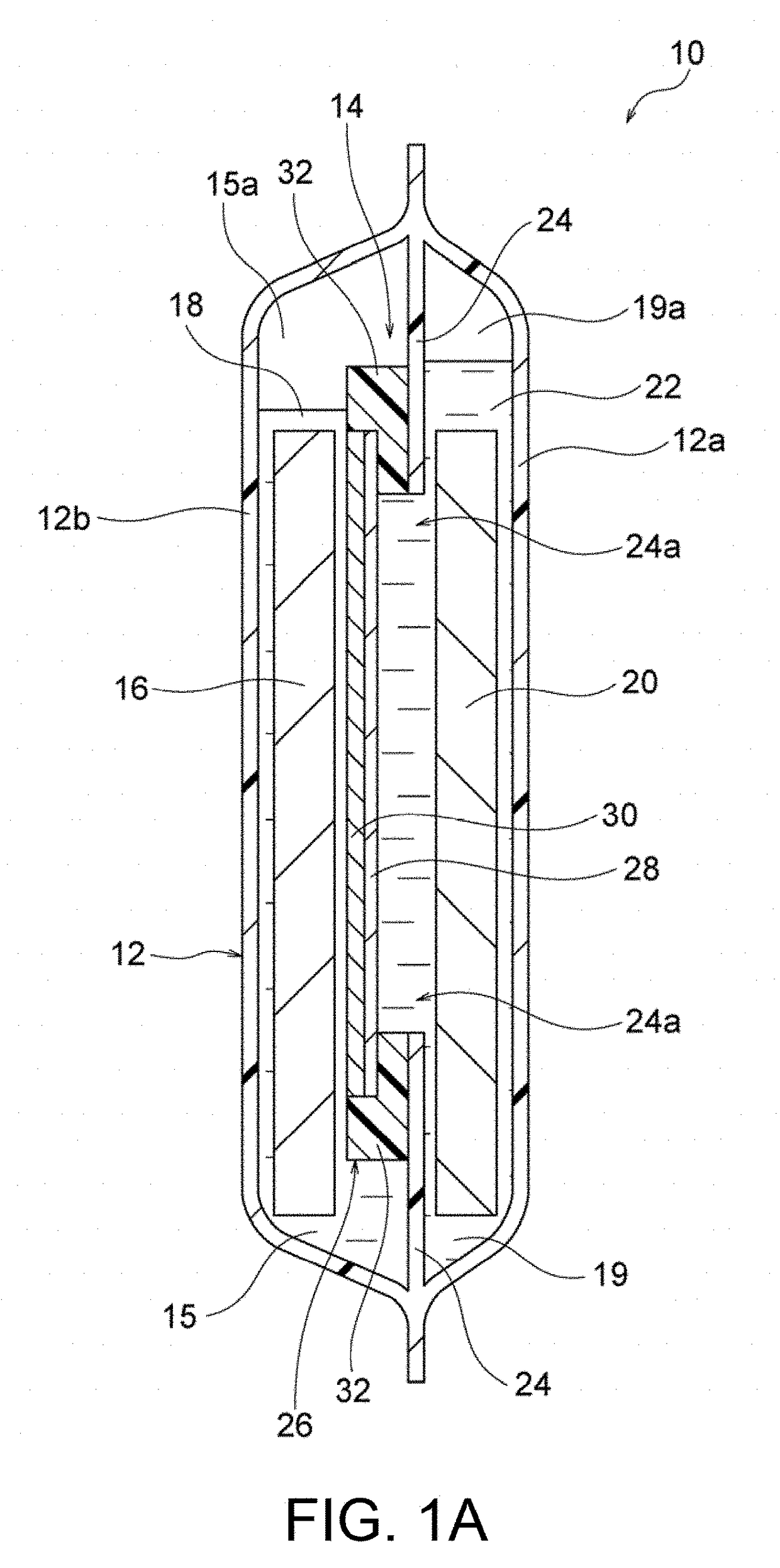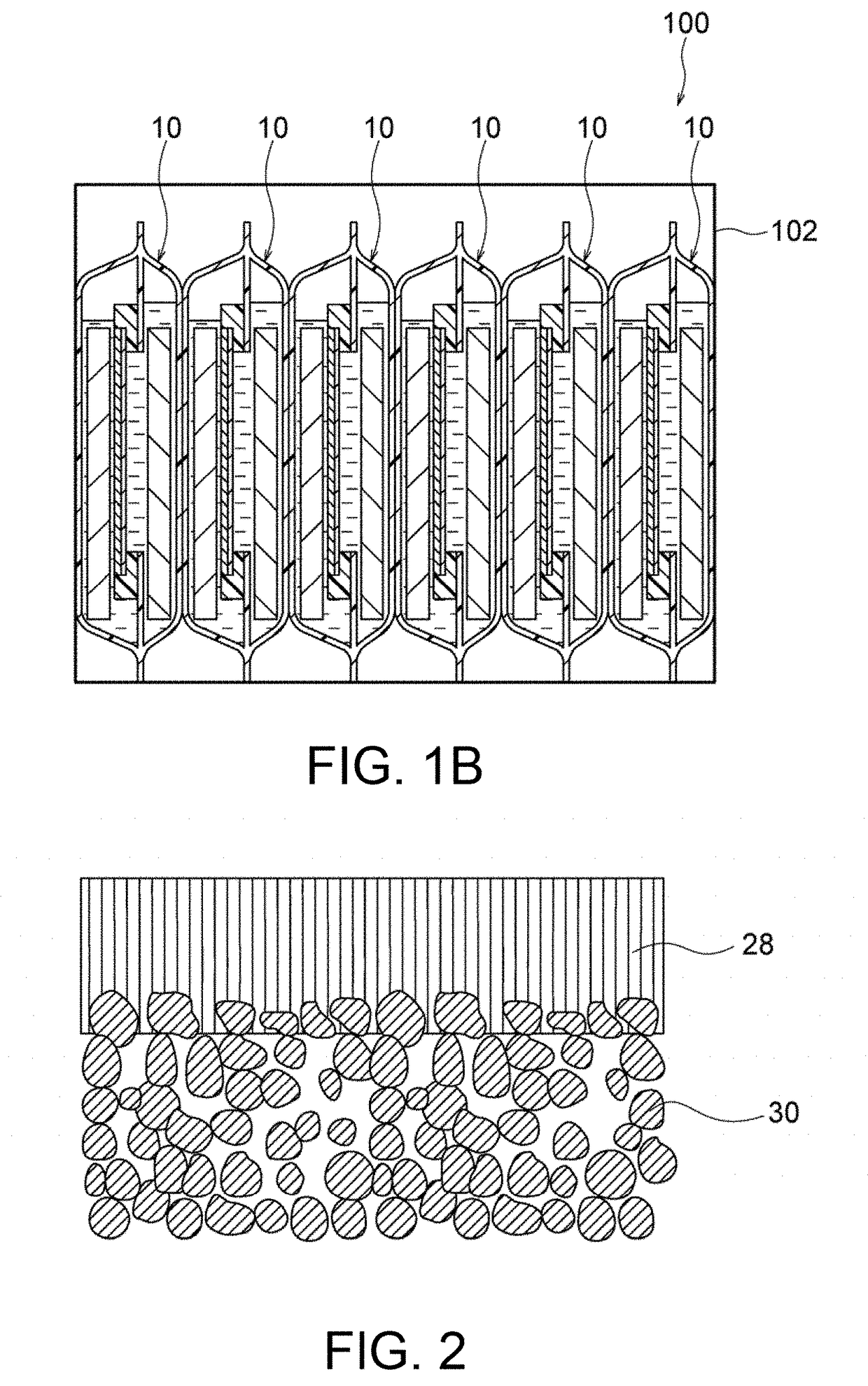Nickel-zinc battery cell pack and battery pack using same
a technology of nickel-zinc battery and cell pack, which is applied in the direction of cell components, nickel accumulators, sustainable manufacturing/processing, etc., can solve the problems of battery not yet being put into practice, short circuit between the negative electrode and the positive electrode, etc., to prevent the short circuit caused by dendritic zinc, high voltage, high current
- Summary
- Abstract
- Description
- Claims
- Application Information
AI Technical Summary
Benefits of technology
Problems solved by technology
Method used
Image
Examples
example 1
on and Evaluation of Porous Substrate-Supported LDH Separator
(1) Preparation of Porous Substrate
[0093]Boehmite (DISPAL 18N4-80, manufactured by Sasol Limited), methyl cellulose, and ion-exchange water were weighed in proportions by mass of 10:1:5, and were then kneaded together. The kneaded product was subjected to extrusion molding with a hand press into a plate having a size sufficiently exceeding 5 cm×8 cm and a thickness of 0.5 cm. The resultant green body was dried at 80° C. for 12 hours and then fired at 1,150° C. for three hours, to prepare an alumina porous substrate. The porous substrate was cut into a piece of 5 cm×8 cm.
[0094]The porosity at the surface of the resultant porous substrate was determined by a method involving image processing. The porosity was 24.6%. The porosity was determined as follows: 1) a scanning electron microscopic (SEM) image of the surface microstructure of the porous substrate was taken with a scanning electron microscope (SEM; JSM-6610LV, manufac...
example 2
(1) Preparation of Separation Sheet
[0106]An alumina substrate-supported LDH membrane was prepared as a porous substrate-supported separator, as in the Example 1. As shown in FIGS. 11A and 11B, a separator 28 supported by a porous substrate 30 had a frame 32 of modified polyphenylene ether resin disposed along the outer periphery of the separator 28 (i.e. the LDH membrane). In this embodiment, the frame 32 had a square shape, and had a step in its inner periphery such that the outer periphery of the porous substrate 30 and the separator 28 was fitted in the step. A laminate film (manufactured by AS ONE Corporation; product name: plastic bag for vacuum sealer; thickness: 50 μm; materials: PP resin (base film) and PE resin (thermoplastic resin)) was placed on the frame 32 as a flexible film 24. The flexible film 24 had a central opening 24a formed in advance, and was disposed such that the opening 24a corresponds to the open area in the frame 32. The joint po...
PUM
| Property | Measurement | Unit |
|---|---|---|
| thickness | aaaaa | aaaaa |
| thickness | aaaaa | aaaaa |
| thickness | aaaaa | aaaaa |
Abstract
Description
Claims
Application Information
 Login to View More
Login to View More - R&D
- Intellectual Property
- Life Sciences
- Materials
- Tech Scout
- Unparalleled Data Quality
- Higher Quality Content
- 60% Fewer Hallucinations
Browse by: Latest US Patents, China's latest patents, Technical Efficacy Thesaurus, Application Domain, Technology Topic, Popular Technical Reports.
© 2025 PatSnap. All rights reserved.Legal|Privacy policy|Modern Slavery Act Transparency Statement|Sitemap|About US| Contact US: help@patsnap.com



